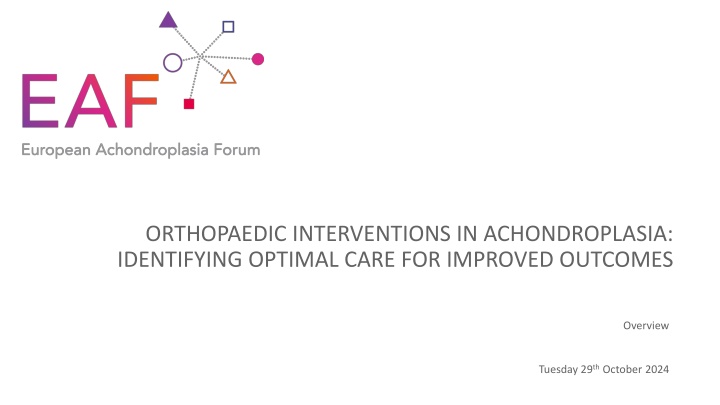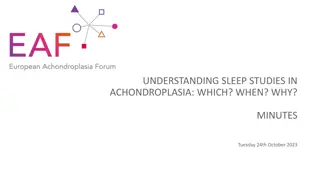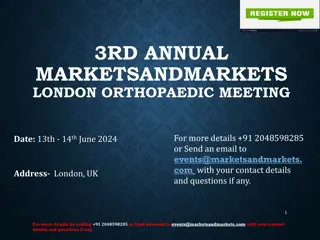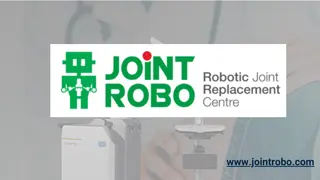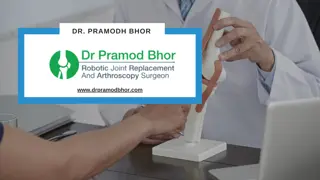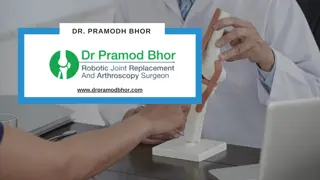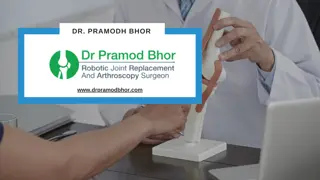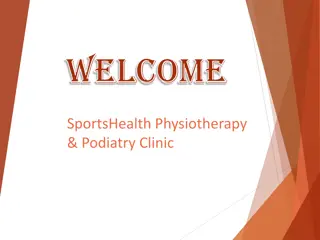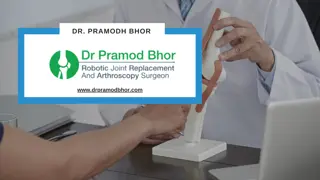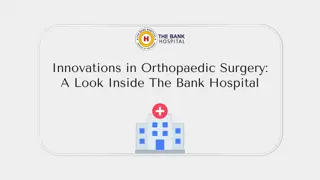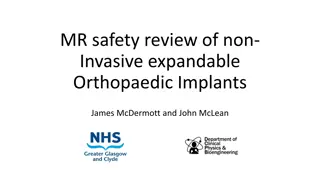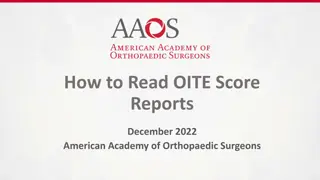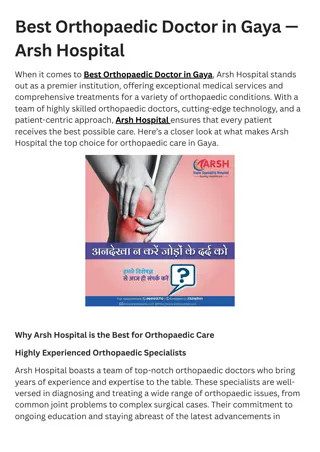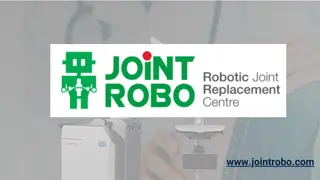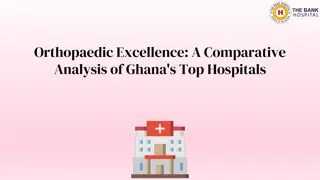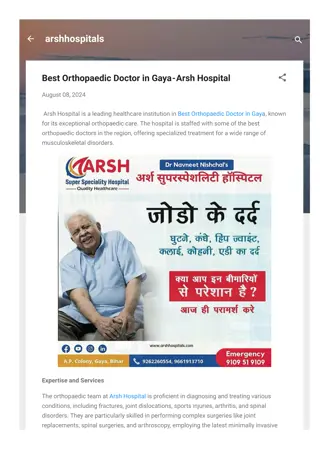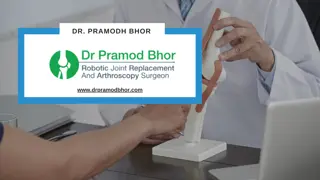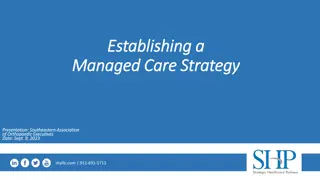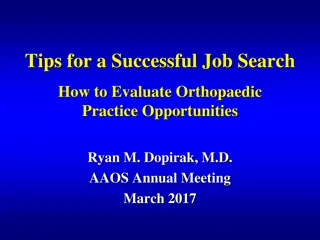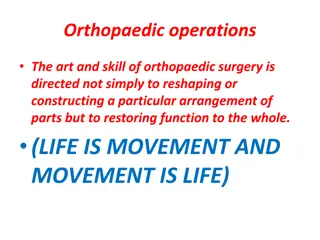Orthopaedic Interventions in Achondroplasia: Optimizing Care for Better Outcomes
This presentation focuses on various orthopaedic interventions in achondroplasia, highlighting treatment options, common issues, prevention strategies, and post-surgery care practices. Experts discuss spinal deformities, stenosis surgeries, and corrective procedures for upper and lower limbs. The session also covers guiding principles emphasizing non-surgical approaches, early monitoring, lifestyle interventions, and limb lengthening surgery to enhance quality of life and functionality.
Download Presentation

Please find below an Image/Link to download the presentation.
The content on the website is provided AS IS for your information and personal use only. It may not be sold, licensed, or shared on other websites without obtaining consent from the author.If you encounter any issues during the download, it is possible that the publisher has removed the file from their server.
You are allowed to download the files provided on this website for personal or commercial use, subject to the condition that they are used lawfully. All files are the property of their respective owners.
The content on the website is provided AS IS for your information and personal use only. It may not be sold, licensed, or shared on other websites without obtaining consent from the author.
E N D
Presentation Transcript
ORTHOPAEDIC INTERVENTIONS IN ACHONDROPLASIA: IDENTIFYING OPTIMAL CARE FOR IMPROVED OUTCOMES Overview Tuesday 29thOctober 2024
Objectives Improve understanding of orthopaedic treatment options in achondroplasia Identify common issues associated with orthopaedic surgeries in achondroplasia Discuss whether orthopaedic interventions are preventable Provide practical guidance for lead clinicians to provide optimal care post-surgery 2
Agenda Orthopaedic interventions in achondroplasia: Identifying optimal care for improved outcomes Orthopaedic interventions for spinal deformity Dr Philip Kunkel Surgery for spinal stenosis Dr Carmen Vleggeert-Landkamp Corrective surgery for upper limbs Dr Simone Riganti Corrective surgery for lower limbs Dr Antonio Leiva-Gea 3
Presentation Summary Orthopaedic interventions for spinal deformity Regular follow-ups are necessary to maximise surgical efficacy and prevent late intervention Brace therapy can be useful non-surgical option Surgery for spinal stenosis Degenerated lumbar spine in achondroplasia can result in decreased pelvic tilt to compensate Lower lumbar spinal stenosis can be attributed to the decreased pelvic tilt Corrective surgery for upper limbs Upper limb corrective surgery has been found to be relatively safe and leads to improved quality of life Corrective surgery for lower limbs Common interventions in childhood and adolescence include correcting malalignment and limb lengthening Adult patients are frequently overlooked and frequently require surgery, including prosthesis 4
EAF Guiding Principles for Orthopaedic Interventions Six guiding principles were developed prior to the workshop; these were presented, discussed and amended and approved Item Guiding Principle Non-surgical approaches, supported by an MDT, should be prioritised whenever possible to avoid unnecessary surgical interventions; this may involve parental education around handling, medical therapy, physiotherapy, brace therapy and weight management A Early identification and regular monitoring of spinal deformities in achondroplasia is essential. Non-surgical management should be prioritised, and surgery reserved for either progressive deformities or neurological deficit leading to impaired function. Surgery should be performed in a highly specialised centre experienced with achondroplasia B Lifestyle interventions, such as body weight control and physical activity, should be considered to reduce the risk of symptomatic spinal stenosis, and to avoid surgery C Upper limb lengthening surgery can be considered to improve health-related quality of life, functionality, and proportionality. Comprehensive evaluation by an experienced MDT should be carried out prior to any surgical intervention D Lower limbs should be monitored for signs of deformity in children, and surgical interventions considered if functionality is reduced, or if the severity of pain is interfering with physical activity E Post surgery care should be coordinated with the MDT to ensure rehabilitation planning and execution with the aim of restoring functionality, preventing complications, promoting recovery and avoiding future surgeries F 5
Summary The Guiding Principles in this workshop will help establish a standard practice for orthopaedic interventions in achondroplasia Keep an eye out for our manuscript capturing the outcomes of the workshop! The EAF will soon be evolving to the IAF, with an expanded steering committee and focus to include related conditions Make sure you follow us on X (formerly Twitter)@ACHONforum Register at the EAF website to be notified about our next workshop achondroplasiaforum.com/register 6
Attendance Number of attendees 30 HCP 25 PAG 3 Industry 2 Number of countries represented 15 8
Most respondents found the event to be good quality and well organised How would you rate the quality of the programme this event? How would you rate the quality of the organisation this event? 10% 20% 50% 30% 60% 30% Excellent Good Fairly Good Excellent Good Fairly Good Based on data from 10 respondents 9
Most respondents found this workshop useful and that the content met their learning expectations Did the event fulfil your educational goals and expected learning outcomes? How useful for your professional activity did you find this event? 10% 20% 50% 20% 60% 40% Extremely useful Useful Fairly useful Very much Somewhat Not much Based on data from 10 respondents 10
Over 75% of respondents found all presentations to be good or excellent How would you rate each session in this workshop? 100 90 80 70 Responses (%) 60 50 40 30 20 10 0 Orthopaedic interventions for spinal deformity Dr Philip Kunkel Surgery for spinal stenosis Dr Carmen Vleggeert-Landkamp Corrective surgery for upper limbs Dr Simone Riganti Corrective surgery for lower limbs Dr Antonio Leiva-Gea Excellent Good Fairly good Percentages are based on the number of respondents for each session: Dr Philip Kunkel, 10 responses; Dr Carmen Vleggeert-Landkamp, 10 responses; Dr Simone Riganti, 9 responses; Dr Antonio Leiva-Gea, 8 responses. 11
Feedback from Attendees Best aspects of this event: Spinal stenosis management Japan is 8 hours ahead of CET so if you could start a little bit earlier it would be very helpful Discussion on spinal interventions Interaction and listening to experts about this condition/pathology Interaction! Hearing research and experiences from across Europe Orthopaedic input See you the next time Discussion Thank you - it was informative and productive Best aspects of this event feedback from 8 attendees, other feedback from 3 attendees 12
